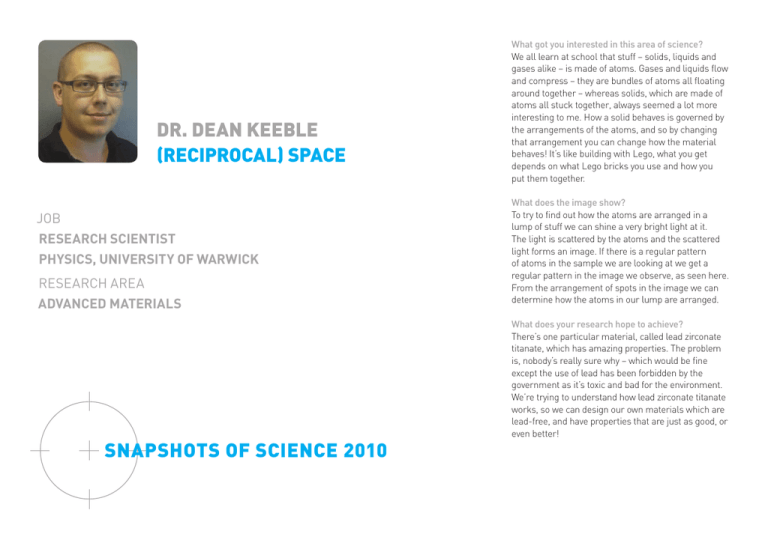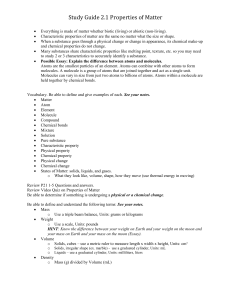What got you interested in this area of science?
advertisement

DR. DEAN KEEBLE (RECIPROCAL) SPACE JOB RESEARCH SCIENTIST PHYSICS, UNIVERSITY OF WARWICK RESEARCH AREA ADVANCED MATERIALS SNAPSHOTS OF SCIENCE 2010 What got you interested in this area of science? We all learn at school that stuff – solids, liquids and gases alike – is made of atoms. Gases and liquids flow and compress – they are bundles of atoms all floating around together – whereas solids, which are made of atoms all stuck together, always seemed a lot more interesting to me. How a solid behaves is governed by the arrangements of the atoms, and so by changing that arrangement you can change how the material behaves! It’s like building with Lego, what you get depends on what Lego bricks you use and how you put them together. What does the image show? To try to find out how the atoms are arranged in a lump of stuff we can shine a very bright light at it. The light is scattered by the atoms and the scattered light forms an image. If there is a regular pattern of atoms in the sample we are looking at we get a regular pattern in the image we observe, as seen here. From the arrangement of spots in the image we can determine how the atoms in our lump are arranged. What does your research hope to achieve? There’s one particular material, called lead zirconate titanate, which has amazing properties. The problem is, nobody’s really sure why – which would be fine except the use of lead has been forbidden by the government as it’s toxic and bad for the environment. We’re trying to understand how lead zirconate titanate works, so we can design our own materials which are lead-free, and have properties that are just as good, or even better!






